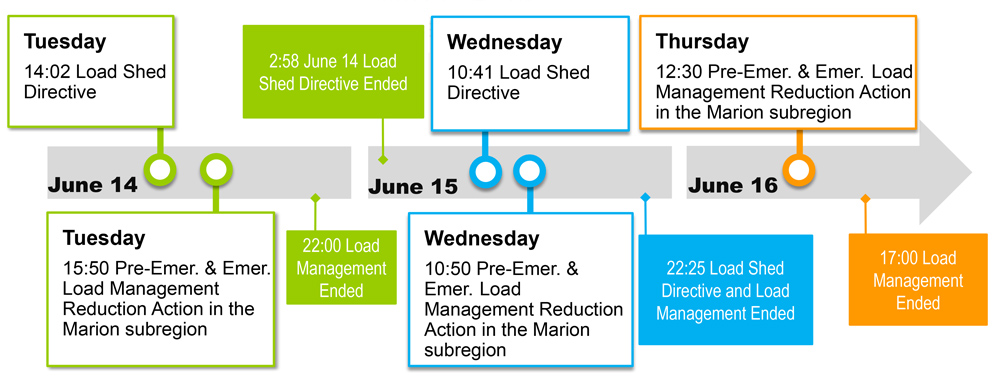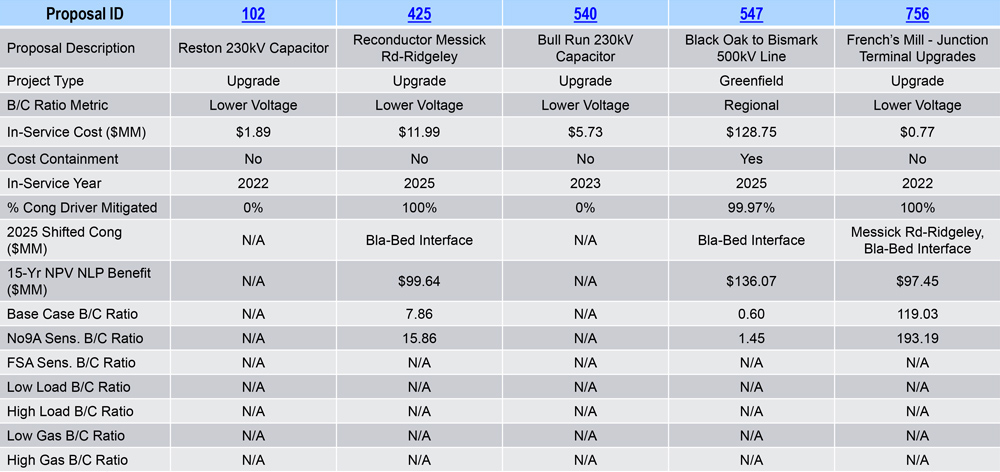MidAmerican Energy will pay $82,000 to the Midwest Reliability Organization for violating NERC’s reliability standards, according to a settlement between the utility and the regional entity approved by FERC on Thursday (NP22-25).
The settlement between MRO and MidAmerican was part of NERC’s monthly spreadsheet notice of penalty, filed on May 31. In its filing Thursday, the commission said it would not further review the agreement, or the others filed in the SNOP, leaving the penalties intact. Commissioner Allison Clements did not participate in the decision.
MRO Knocks MidAmerican for Misratings
MidAmerican’s violation concerns FAC-009-1 (Establish and communicate facility ratings), which was active from 2007 until 2012, when it was replaced by FAC-008-3 (Facility ratings); the latter standard was in effect when the utility discovered the violation.
Requirement R1 of FAC-009-1 makes transmission owners and generator owners responsible for establishing facility ratings for their “solely and jointly owned facilities that are consistent” with an established facility ratings methodology (FRM). MidAmerican reported in June 2018 that it was noncompliant with this requirement and had been since the standard became enforceable in 2007.
The utility reported that it had identified 21 facility ratings errors during an internal review, later expanded to 89 errors after an extent of condition examination. MidAmerican’s FRM required that it base facility ratings on the “most limiting element of a facility,” which was not done at the affected facilities because of oversights. In some cases, the utility “failed to consider industry standards for substation bus design … and for reducing equipment loss of life.” In others, MidAmerican changed its field equipment but neglected to update the documentation used for ratings.
MidAmerican’s mitigation steps included updating all its facility ratings. This resulted in reduced ratings for 62 facilities, including one whose summer normal rating was lowered 5% while its winter rating was reduced 20%. The other 27 ratings were increased. The entity also overhauled the checklists for its substation engineering quality assurance review, trained personnel on the changes, and implemented annual field reviews, starting in 2018.
MRO decided that the violations comprised a “moderate” but not a “serious or substantial” risk to BPS reliability. While the RE acknowledged that operating a facility above the rating of its most limiting element could damage that element and possibly lead to failure, in practice none of the misrated elements experienced enough flow to cause problems during the 12 years the utility was in violation. For the underrated elements the danger was even less, because the misratings “resulted in overly conservative operation of the facilities.” No harm has been attributed to the violation.
Army Corps Failed to File Models
The SNOP also included a settlement between SERC Reliability and the U.S. Army Corps of Engineers (USACE) for violations of reliability standards in USACE’s Savannah, Mobile, and Wilmington districts. No monetary penalty was assessed for these violations.
The same two standards were at issue in all three cases: MOD-026-1 (Verification of models and data for generator excitation control system or plant volt/var control functions) and MOD-027-1 (Verification of models and data for turbine/governor and load control or active power/frequency control functions). SERC discovered that Savannah and Mobile were in violation of both standards during compliance audits in 2018; Wilmington notified the RE of its infringement in 2020.
Requirement R2 of MOD-026-1 requires GOs to provide transmission planners a verified excitation control system and plant volt/var control function model; under MOD-027-1, requirement R2 mandates that TPs be provided a verified turbine/governor and load control or active power/frequency control model. The implementation plans for the standards set deadlines for achieving certain percentages of compliance. Violations began in all three cases on July 1, 2018, when the GOs were to have provided the needed data for at least 30% of applicable units.
SERC determined the cause of the violations to be ineffective resource management in the case of USACE-Savannah, and management oversight for the other two districts. But the description of the error was the same for each district: The managers “failed to allocate sufficient manpower and resources dedicated to track and maintain NERC compliance.”
The districts also implemented the same mitigation strategies. Each one created a team dedicated to compliance monitoring; established a central electronic repository for evidence and documentation; performed model verification testing for the relevant standards; and submitted model verification data to their TPs.
SERC had planned to resolve the violations as compliance exceptions, which can be recorded and mitigated without triggering formal enforcement actions. However, the RE decided to elevate them to settlement agreements and file the infringement with FERC because the utilities were unable to meet their initial goal of completing the mitigation plan by December 31, 2021, and requested a 12-month extension.


